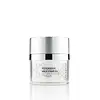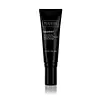What's inside
What's inside
 Key Ingredients
Key Ingredients

 Benefits
Benefits

 Concerns
Concerns

 Ingredients Side-by-side
Ingredients Side-by-side

Water
Skin ConditioningGlycerin
HumectantCaprylic/Capric Triglyceride
MaskingC13-15 Alkane
SolventSqualane
EmollientC12-16 Alcohols
EmollientCetearyl Alcohol
EmollientDimethicone
EmollientNiacinamide
SmoothingPalmitoyl Hexapeptide-12
Skin ConditioningPalmitoyl Tripeptide-1
Skin ConditioningAcetyl Tetrapeptide-2
Skin ConditioningPhosphatidylserine
Emulsion StabilisingOleuropein
AntioxidantCeramide NP
Skin ConditioningLinum Usitatissimum Seed Extract
PerfumingPlantago Lanceolata Leaf Extract
AntimicrobialPeucedanum Graveolens Extract
TonicButyrospermum Parkii Butter Extract
Skin ConditioningTremella Fuciformis Sporocarp Extract
AntioxidantHydroxymethoxyphenyl Decanone
Skin ConditioningBetaine
HumectantAscorbyl Palmitate
AntioxidantOlea Europaea Leaf Extract
PerfumingDunaliella Salina Extract
Skin ConditioningPersea Gratissima Fruit Extract
EmollientPhospholipids
Skin ConditioningBentonite
AbsorbentPalmitic Acid
EmollientHydrogenated Lecithin
EmulsifyingTocopherol
AntioxidantXanthan Gum
EmulsifyingCaprylyl Glycol
EmollientCaprylyl Methicone
Skin ConditioningButylene Glycol
HumectantLecithin
EmollientSclerotium Gum
Emulsion StabilisingPullulan
Polyglyceryl-10 Stearate
Skin ConditioningSucrose Stearate
EmollientDisodium EDTA
Ethylhexylglycerin
Skin ConditioningCaprylhydroxamic Acid
Phenoxyethanol
PreservativeWater, Glycerin, Caprylic/Capric Triglyceride, C13-15 Alkane, Squalane, C12-16 Alcohols, Cetearyl Alcohol, Dimethicone, Niacinamide, Palmitoyl Hexapeptide-12, Palmitoyl Tripeptide-1, Acetyl Tetrapeptide-2, Phosphatidylserine, Oleuropein, Ceramide NP, Linum Usitatissimum Seed Extract, Plantago Lanceolata Leaf Extract, Peucedanum Graveolens Extract, Butyrospermum Parkii Butter Extract, Tremella Fuciformis Sporocarp Extract, Hydroxymethoxyphenyl Decanone, Betaine, Ascorbyl Palmitate, Olea Europaea Leaf Extract, Dunaliella Salina Extract, Persea Gratissima Fruit Extract, Phospholipids, Bentonite, Palmitic Acid, Hydrogenated Lecithin, Tocopherol, Xanthan Gum, Caprylyl Glycol, Caprylyl Methicone, Butylene Glycol, Lecithin, Sclerotium Gum, Pullulan, Polyglyceryl-10 Stearate, Sucrose Stearate, Disodium EDTA, Ethylhexylglycerin, Caprylhydroxamic Acid, Phenoxyethanol
Water
Skin ConditioningGlycerin
HumectantTricaprylin
MaskingCetyl Esters
EmollientCanarium Indicum Seed Oil
Skin ConditioningCocos Nucifera Fruit Extract
EmollientC12-15 Alkyl Benzoate
AntimicrobialGlyceryl Stearate Citrate
EmollientCetearyl Alcohol
EmollientDimethicone
EmollientSqualane
EmollientGlyceryl Stearate
EmollientPEG-100 Stearate
Methylsilanol Carboxymethyl Theophylline Alginate
Skin ConditioningHordeum Distichon Extract
Skin ProtectingYeast Extract
Skin ConditioningSantalum Album Extract
CleansingPrunus Amygdalus Dulcis Seed Extract
Skin ConditioningPhellodendron Amurense Bark Extract
Skin ConditioningPalmitoyl Tripeptide-5
Skin ConditioningLauryl Lactate
EmollientSteareth-10
EmulsifyingCeramide Ng
Skin ConditioningDihydromyricetin
Skin ConditioningPalmitoyl Tetrapeptide-7
Skin ConditioningEnteromorpha Compressa Extract
Skin ProtectingTripleurospermum Maritimum Extract
Skin ProtectingPalmitoyl Dipeptide-5 Diaminobutyroyl Hydroxythreonine
Skin ConditioningBambusa Vulgaris Leaf/Stem Extract
HumectantSteareth-20
CleansingHydroxyethyl Acrylate/Sodium Acryloyldimethyl Taurate Copolymer
Emulsion StabilisingPalmitoyl Hexapeptide-12
Skin ConditioningPisum Sativum Extract
Skin ConditioningTocopherol
AntioxidantPolysorbate 60
EmulsifyingButylene Glycol
HumectantGlucosamine Hcl
Tetrahexyldecyl Ascorbate
AntioxidantPEG-10 Phytosterol
EmulsifyingTetradecyl Aminobutyroylvalylaminobutyric Urea Trifluoroacetate
Skin ConditioningTriethanolamine
BufferingCaprylyl Glycol
EmollientTribehenin
EmollientDiazolidinyl Urea
PreservativeCarbomer
Emulsion StabilisingDisodium EDTA
Xanthan Gum
EmulsifyingIodopropynyl Butylcarbamate
PreservativePotassium Sorbate
PreservativeMagnesium Chloride
Sodium Benzoate
MaskingSorbic Acid
PreservativeParfum
MaskingWater, Glycerin, Tricaprylin, Cetyl Esters, Canarium Indicum Seed Oil, Cocos Nucifera Fruit Extract, C12-15 Alkyl Benzoate, Glyceryl Stearate Citrate, Cetearyl Alcohol, Dimethicone, Squalane, Glyceryl Stearate, PEG-100 Stearate, Methylsilanol Carboxymethyl Theophylline Alginate, Hordeum Distichon Extract, Yeast Extract, Santalum Album Extract, Prunus Amygdalus Dulcis Seed Extract, Phellodendron Amurense Bark Extract, Palmitoyl Tripeptide-5, Lauryl Lactate, Steareth-10, Ceramide Ng, Dihydromyricetin, Palmitoyl Tetrapeptide-7, Enteromorpha Compressa Extract, Tripleurospermum Maritimum Extract, Palmitoyl Dipeptide-5 Diaminobutyroyl Hydroxythreonine, Bambusa Vulgaris Leaf/Stem Extract, Steareth-20, Hydroxyethyl Acrylate/Sodium Acryloyldimethyl Taurate Copolymer, Palmitoyl Hexapeptide-12, Pisum Sativum Extract, Tocopherol, Polysorbate 60, Butylene Glycol, Glucosamine Hcl, Tetrahexyldecyl Ascorbate, PEG-10 Phytosterol, Tetradecyl Aminobutyroylvalylaminobutyric Urea Trifluoroacetate, Triethanolamine, Caprylyl Glycol, Tribehenin, Diazolidinyl Urea, Carbomer, Disodium EDTA, Xanthan Gum, Iodopropynyl Butylcarbamate, Potassium Sorbate, Magnesium Chloride, Sodium Benzoate, Sorbic Acid, Parfum
Ingredients Explained
These ingredients are found in both products.
Ingredients higher up in an ingredient list are typically present in a larger amount.
Butylene Glycol (or BG) is used within cosmetic products for a few different reasons:
Overall, Butylene Glycol is a safe and well-rounded ingredient that works well with other ingredients.
Though this ingredient works well with most skin types, some people with sensitive skin may experience a reaction such as allergic rashes, closed comedones, or itchiness.
Learn more about Butylene GlycolCaprylyl Glycol is a humectant and emollient, meaning it attracts and preserves moisture.
It is a common ingredient in many products, especially those designed to hydrate skin. The primary benefits are retaining moisture, skin softening, and promoting a healthy skin barrier.
Though Caprylyl Glycol is an alcohol derived from fatty acids, it is not the kind that can dry out skin.
This ingredient is also used as a preservative to extend the life of products. It has slight antimicrobial properties.
Learn more about Caprylyl GlycolCetearyl alcohol is a mixture of two fatty alcohols: cetyl alcohol and stearyl alcohol. It is mainly used as an emulsifier. Emulsifiers help prevent the separation of oils and products. Due to its composition, it can also be used to thicken a product or help create foam.
Cetearyl alcohol is an emollient. Emollients help soothe and hydrate the skin by trapping moisture.
Studies show Cetearyl alcohol is non-toxic and non-irritating. The FDA allows products labeled "alcohol-free" to have fatty alcohols.
This ingredient is usually derived from plant oils such as palm, vegetable, or coconut oils. There is debate on whether this ingredient will cause acne.
Due to the fatty acid base, this ingredient may not be Malassezia folliculitis safe.
Learn more about Cetearyl AlcoholDimethicone is a type of synthetic silicone created from natural materials such as quartz.
What it does:
Dimethicone comes in different viscosities:
Depending on the viscosity, dimethicone has different properties.
Ingredients lists don't always show which type is used, so we recommend reaching out to the brand if you have questions about the viscosity.
This ingredient is unlikely to cause irritation because it does not get absorbed into skin. However, people with silicone allergies should be careful about using this ingredient.
Note: Dimethicone may contribute to pilling. This is because it is not oil or water soluble, so pilling may occur when layered with products. When mixed with heavy oils in a formula, the outcome is also quite greasy.
Learn more about DimethiconeDisodium EDTA plays a role in making products more stable by aiding other preservatives.
It is a chelating agent, meaning it neutralizes metal ions that may be found in a product.
Disodium EDTA is a salt of edetic acid and is found to be safe in cosmetic ingredients.
Learn more about Disodium EDTAGlycerin is already naturally found in your skin. It helps moisturize and protect your skin.
A study from 2016 found glycerin to be more effective as a humectant than AHAs and hyaluronic acid.
As a humectant, it helps the skin stay hydrated by pulling moisture to your skin. The low molecular weight of glycerin allows it to pull moisture into the deeper layers of your skin.
Hydrated skin improves your skin barrier; Your skin barrier helps protect against irritants and bacteria.
Glycerin has also been found to have antimicrobial and antiviral properties. Due to these properties, glycerin is often used in wound and burn treatments.
In cosmetics, glycerin is usually derived from plants such as soybean or palm. However, it can also be sourced from animals, such as tallow or animal fat.
This ingredient is organic, colorless, odorless, and non-toxic.
Glycerin is the name for this ingredient in American English. British English uses Glycerol/Glycerine.
Learn more about GlycerinPalmitoyl Hexapeptide-12 is a synthetic peptide made with glycine, histidine, lysine, and palmitic acid.
The sequence of this peptide matches that of elastin, a key protein that plays a role in how firm our skin is.
Due to its palmitic acid base, this ingredient may not be fungal-acne safe.
Learn more about Palmitoyl Hexapeptide-12Squalane is an emollient that helps the skin hold onto moisture. It's an oily liquid that occurs naturally in certain types of fish and plant oils.
Because squalane boosts hydration in the skin, it also comes with plenty of benefits: it is an antioxidant and can help fight free radicals and skin damage. Squalane is also found to have a detoxifying effect when applied.
Squalane comes from squalene, which occurs naturally within the sebum of our skin. It is one of the oils our skin produces to keep itself hydrated. Squalane is the hydrogenated version of squalene and has a longer shelf life.
Research shows that squalane is non-irritating (even at 100% concentration).
In general, it's a fantastic ingredient. It does a great job at hydrating the skin, and it's suitable for those with sensitive skin.
The source of squalane may impact malassezia / fungal acne. This is because olive oil derived squalane can contain impurities such as fatty acids and plant waxes. Sugarcane derived squalane is recommended for anyone with malassezia concerns.
Is squalane vegan?
This depends on the source. Squalane can be derived from both plants and animals. Most squalane used in skincare comes from plants.
Please note: the source of squalane is only known if disclosed by the brand. We recommend reaching out to the brand if you have any questions about their squalane.
Read more about squalene with an "e".
Is squalane an oil?
Squalane is often called an oil, but it’s technically not; it’s a hydrocarbon, meaning it’s only made of carbon and hydrogen, unlike true oils which are triglycerides made of fatty acids and glycerol.
The term “oil-free” isn’t regulated, so companies can define it however they want. Some exclude all oils, while others just avoid mineral oil or comedogenic oils.
While some people avoid oils thinking they cause breakouts, the right kind of oil (or oil-like ingredient like squalane) can actually help balance and hydrate your skin. It’s worth testing out simple oils or squalane to see what works best for your skin.
Learn more about SqualaneTocopherol (also known as Vitamin E) is a common antioxidant used to help protect the skin from free-radicals and strengthen the skin barrier. It's also fat soluble - this means our skin is great at absorbing it.
Vitamin E also helps keep your natural skin lipids healthy. Your lipid skin barrier naturally consists of lipids, ceramides, and fatty acids. Vitamin E offers extra protection for your skin’s lipid barrier, keeping your skin healthy and nourished.
Another benefit is a bit of UV protection. Vitamin E helps reduce the damage caused by UVB rays. (It should not replace your sunscreen). Combining it with Vitamin C can decrease sunburned cells and hyperpigmentation after UV exposure.
You might have noticed Vitamin E + C often paired together. This is because it is great at stabilizing Vitamin C. Using the two together helps increase the effectiveness of both ingredients.
There are often claims that Vitamin E can reduce/prevent scarring, but these claims haven't been confirmed by scientific research.
Learn more about TocopherolWater. It's the most common cosmetic ingredient of all. You'll usually see it at the top of ingredient lists, meaning that it makes up the largest part of the product.
So why is it so popular? Water most often acts as a solvent - this means that it helps dissolve other ingredients into the formulation.
You'll also recognize water as that liquid we all need to stay alive. If you see this, drink a glass of water. Stay hydrated!
Learn more about WaterXanthan gum is used as a stabilizer and thickener within cosmetic products. It helps give products a sticky, thick feeling - preventing them from being too runny.
On the technical side of things, xanthan gum is a polysaccharide - a combination consisting of multiple sugar molecules bonded together.
Xanthan gum is a pretty common and great ingredient. It is a natural, non-toxic, non-irritating ingredient that is also commonly used in food products.
Learn more about Xanthan Gum